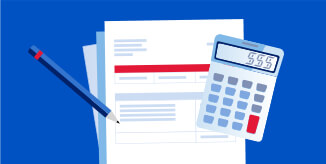What’s a credit limit—and why it matters
Understanding what you can—and should—use helps to build better credit scores and keep you from maxing out
Read, 3 minutes
If you have ever used a credit card or tapped into a line of credit, you probably know that you have a credit limit. But what is it exactly? A credit limit is the maximum amount of money a lender will allow you to spend on a credit card or a line of credit. Knowing your maximum, however, does not mean it’s a good idea to reach it. In fact, learning how to manage your limit responsibly now will likely improve how much you can borrow down the road for such things as a home or a car. Here’s what you need to know.
How can you learn your credit limit?
Generally, your limit is included on your credit card statement or is available via your online account. You can also call the number on the back of your card to ask your provider.
How is a credit limit determined?
Credit card issuers set credit limits. They want the limits to be high enough that you’ll use the card, but low enough that you won’t spend more than you can pay back. To find that sweet spot, they consider your:
Credit score and history
Income
Debt as a percentage of income
Limits on other credit cards
The type of card could also dictate the credit limit. Some cards have preset limits that are the same for virtually everyone. Others have a credit-limit range and use consumers’ credit histories to determine where they land in the range.
Why does a credit limit matter?
A big part of your credit score is determined by how much of your total credit you use—meaning the balances and limits on all of your cards are taken into account to calculate your score. Having a good credit score can affect your ability to get financing on things like a home or car, start a business or get certain types of jobs.
Lenders generally prefer that you use less than 30 percent of your credit limit.
It’s always a good idea to keep your credit card balance as low as possible in relation to your credit limit. Of course, paying your balance in full each month is the best practice. If you can’t, paying as much over the minimum as you can is still a step in the right direction.
Did you know?
Your credit utilization rate—the size of your balance compared to your credit limit—is the second biggest factor, after payment history, in calculating your credit score. One of the easiest ways to raise your score is by using a lower percentage of your credit limit. You can do that by paying down balances or asking your credit card issuer to increase your limit.
What if you exceed your credit limit?
Charging too much on your credit card can have a number of negative consequences. Credit card lenders may assess overcharge fees, decrease your credit limit or even close your account if you go over your limit. Lenders may also increase your interest rate if your credit history shows that you regularly exceed your credit limit, and your credit score may be negatively affected. So know your limit—and always keep track of how much you have charged.
Why did your credit limit change?
Credit card issuers periodically review how customers are using their cards and adjust credit limits accordingly. Here are some common reasons your credit limit could increase or decrease.
Increases
- You’ve used your existing credit wisely
- You consistently pay on time
- Your overall credit score improves
- You’ve reported an increase in income
- You request an increase from the card issuer
Decreases
- You’ve taken on more debt
- You’ve missed payments
- You rarely used the card
- Your credit report contains an error
- Your identity has been compromised
